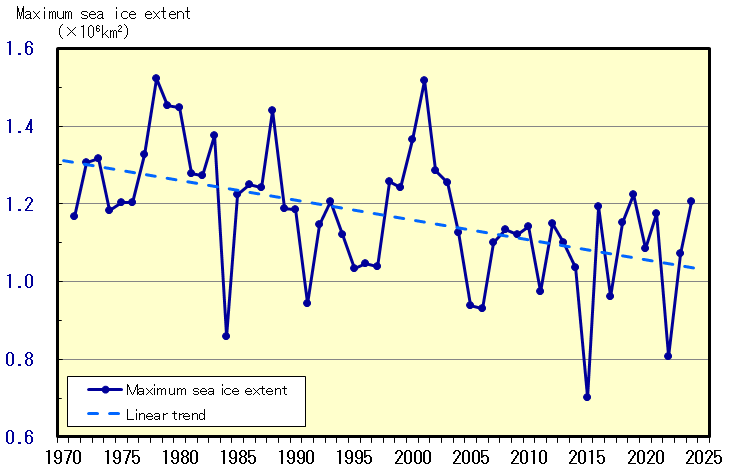Updated on 2 Jul. 2025
Japan Meteorological Agency
It is virtually certain that the maximum sea ice extent in the Sea of Okhotsk follows a long-term trend of reduction by which an area equivalent to 3.4% of the sea's total area is lost per decade.

Time-series representations of maximum sea ice extents in the Sea of Okhotsk from 1971 to 2025.
Although the maximum sea ice extent in the Sea of Okhotsk shows large interannual variations because it is highly sensitive to changes in regional air temperature, wind and sea surface temperature, it is virtually certain that it followed a long-term downward trend from 1970/1971 to 2024/2025. The sea ice extent has decreased by 0.054 [0.028 - 0.079] x 106 km2 per decade (the numbers in square brackets indicate the two-sided 95% confidence interval), which equates to a loss of 3.4 [1.8 - 5.0]% of the total sea area per decade.
Global warming may have contributed to this trend. However, longer-term data are required for evaluation of the relationship between global warming and the reduced sea ice extent observed in the Sea of Okhotsk.
*Maximum sea ice extent: the largest sea ice extent in the winter